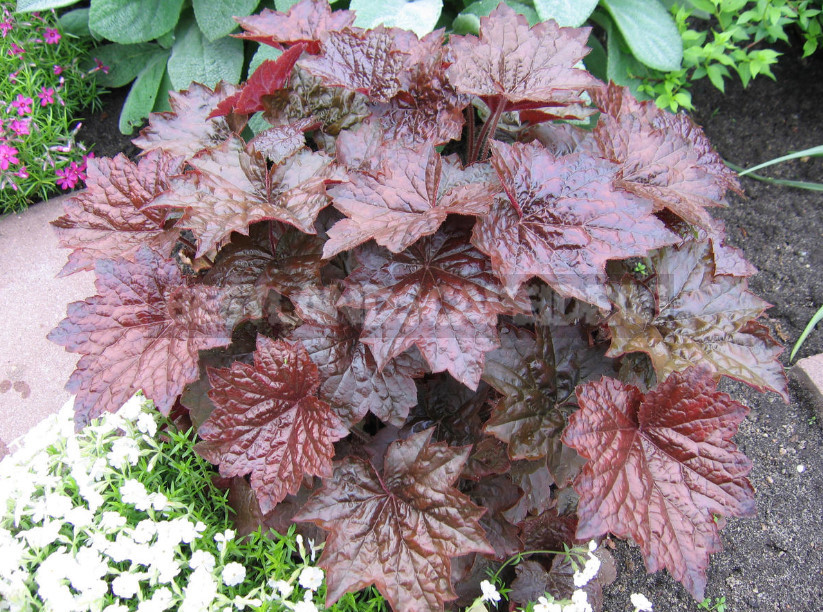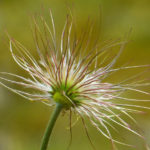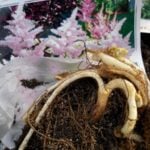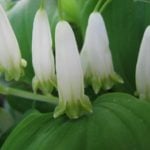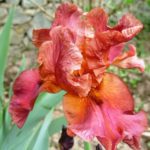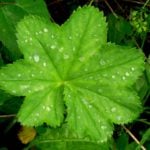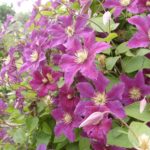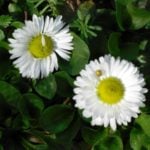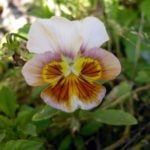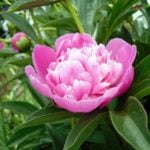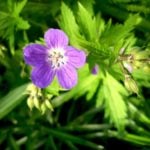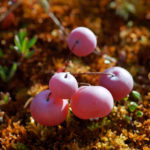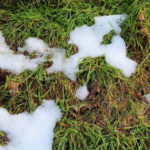Heuchera easily propagated by seeds, but in most cases, seed reproduction it loses varietal characteristics. And yet in the sale of rare seeds Heuchera. It is either a mixture of seeds collected from various plants, including varietal, or it is wild seeds.
The most widespread in the sale of seeds was widely known and very popular variety H. villosa ‘Palace Purple’, named “perennial of the year” in 1991. Until recently, it was attributed to Heuchera micrantha, but after microscopic examination of the seed shells of the plant breeders came to the conclusion that it is a variety of Heuchera villosa. Often seedlings of this variety are characterized by the intensity of the color of the foliage, but selecting the brightest of them, you can grow very beautiful specimens with maple leaves purple-bronze or black-brown with a metallic sheen. Such spectacular cultivars are able to decorate any garden, and often growers planted seedlings of this variety border along the paths or frame their floral arrangements.
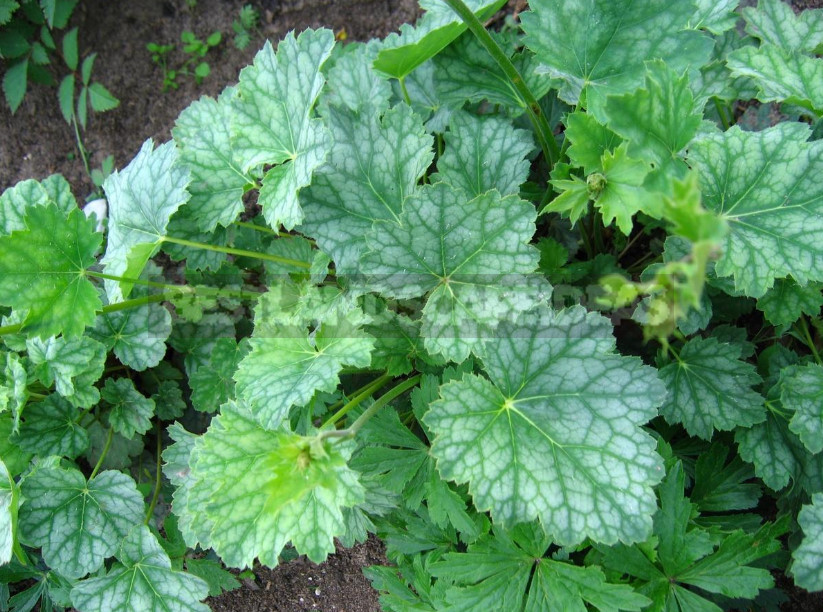
The seeds are of the lesser known variety Heuchera americana with the commercial name ‘Dale’s Strain’. The variety is valued for silver leaves with delicate green venation ‘Silver Selection’. It was obtained by careful selection of specimens with the most pronounced silvery leaves from among wild plants.
Some varieties of H. sanguinea, such as ‘Leuchtkafer’, ‘White Cloud’, ‘Sioux Falls’, which are valued for bright and abundant flowering, have a high percentage of uniformity of seedlings in color of flowers. But sales are yet rare.
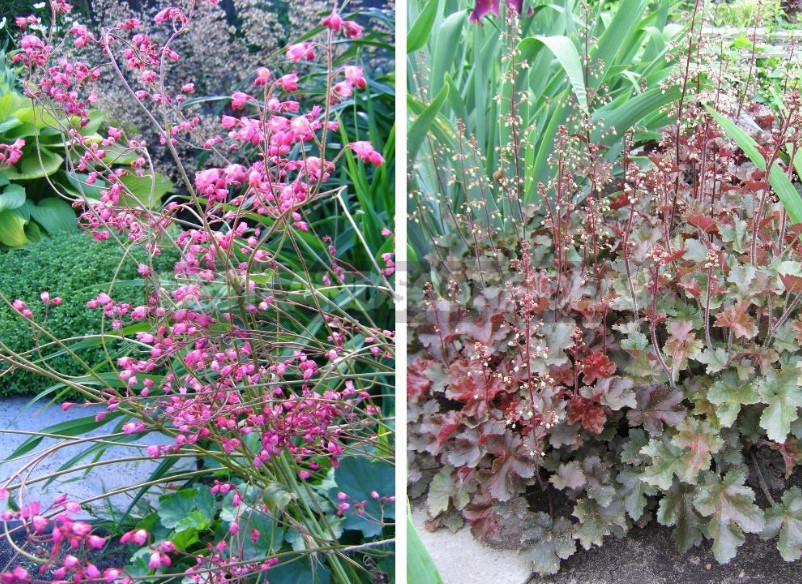
Over the past few years, heuchera seeds called ‘Emperors New Clothes’ have enjoyed continued success with growers. As a rule, seedlings under such a funny name differ in color strongly wavy foliage. It can be light green, and brownish-purple, and dark cherry, and ochre-emerald. These Heuchera grow rapidly and are characterized by good winter hardiness and abundant flowering.
The nuances and peculiarities of seed breeding Heuchera
As a rule, seedlings in further cultivation are distinguished by excellent health and unpretentiousness, because they are zoned. This quality is especially attractive for Amateur gardeners, for whom the purity of heucher Is not a primary factor.
Heuchera seeds are black, similar to poppy seeds, but much smaller. The resulting seedlings are quite different in color and shape of leaves and flowers from the parent plant. The experiments showed that out of 5000 heuchera seedlings, only 1-2 specimens fully corresponded to all varietal characteristics of the cultivar from which the seeds were taken for the experiment. Therefore, varietal Heuchera is advisable to propagate vegetatively.
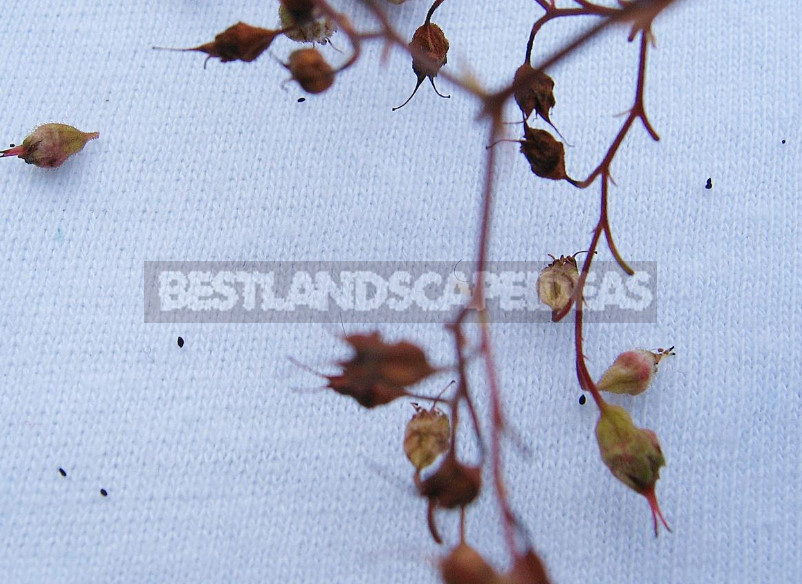
If you decide to start growing Heucheras from your own seeds, for example, for breeding purposes, you should know that they lose their viability within 6 months after harvesting. Metallic foil vacuum inside packing, used in industrial production, extend shelf life. In the refrigerator at a temperature of +4 degrees also extends the shelf life of freshly harvested seeds.
Different varieties and species of Heuchera bloom at different times, and so the seeds are harvested as they Mature. Unfortunately, not all Heucheras in our climatic conditions can fully tie the seeds. In addition, their aging plant spends so much effort that the kidneys of renewal are laid later and are weak, and this leads to a decrease in the life of the plant and a bad winter. Reduce damage is possible if left only a few stalks the first, delete the rest.
Once most of the flowers in the inflorescence wither and brown achenes and will begin mass ripening of the seeds, the stalks are cut and dried in paper bags in a dry warm place until, until the seeds will start to loose sleep from the bolls.
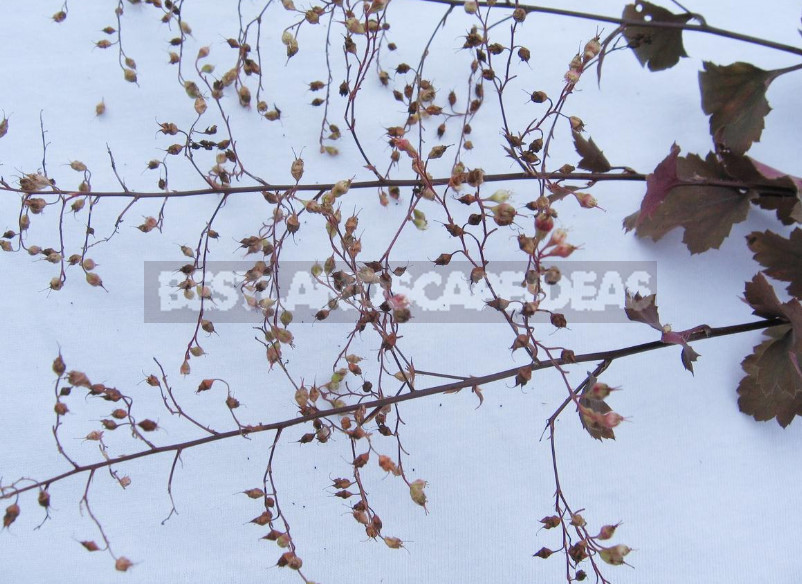
Heuchera seeds do not need any special treatment or stratification, they can be sown in the winter, when the negative temperatures are established, and the earth will freeze a little. Often it happens in late October — early November. Usually the seeds are sown in special small plastic containers, which are dug into the ground or enclose the place with, for example, a cut low plastic container without a bottom. As a rule, the traditional shelter for the winter do not, as the smallest seeds are sown superficially, and in the spring they can be accidentally removed from the surface of the earth along with the same shelter.

The optimum time of sowing of seeds purchased in the winter — the middle of March – beginning of April. The soil for sowing should be neutral in acidity, well-drained, it is desirable to add perlite to it (about 30%). If necessary, the earthen substrate is disinfected. At home, it can be steamed in the oven for an hour or 2-3 days before sowing, moisten with 0.2% fundazole solution.
For sowing, it is better to take a plastic container with drainage holes and bumpers with a height of at least 4-5 cm. Moisten the earthen mixture in the sowing container to such an extent that it is not wet and has a crumbly structure. If in its structure perlite was not used, then it is possible to “powder” the surface with a pure calcined coarse-grained sand layer of 2-3 mm.
Seeds sow “randomly”, using for this purpose folded in half a sheet of paper, evenly moving the spilling seeds back and forth along the entire width of the sowing container. If the seeds are small, it is better to mix them with sand and only then sow — so it is easier to achieve a uniform distribution of seeds on the surface. After that, very carefully pour the water from the sprinkler with a misty stream and cover the top with glass or transparent film.
Put the crops in a bright place, but not under direct sunlight. The bottom of the container should not be cold, as is often the case with the content of crops on the windowsill, if necessary, put a warming material under it. At room temperature (+20…+22 degrees) Heuchera germinate in 2-3 weeks. After the emergence of glass or film for a few days you need to open for some time for ventilation, then remove altogether. Make sure that the substrate does not dry out, but also was not over-wetted. Watering is carried out carefully, you can do it through the pallet.
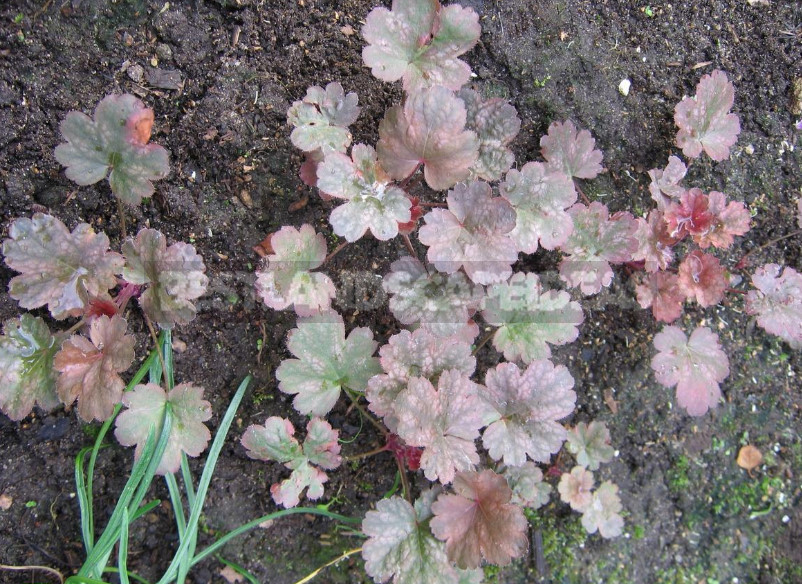
Dive seedlings in the stage of 3-4 real leaves. Grown plants are tempered and planted in the open ground in June, where they tend to adapt quickly and without problems and by the end of the season already have full outlets that can winter without shelter. Only for the purpose of snow retention it is possible to put some branches of spruce spruce branches on top of young Heuchera.
Sometimes Heuchera give self-seeding. Usually “kids” emerge in June-July not far from parental plants.

Their individual characteristics (colour of leaves, habit, flowering, low maintenance requirements, etc.) the seedlings are on the 2-3 year of life. As a collector, I want to remind: such heucheras Are not pure, so in order to avoid misunderstandings and confusion should not assign the names of the seedlings varieties of parent plants.
